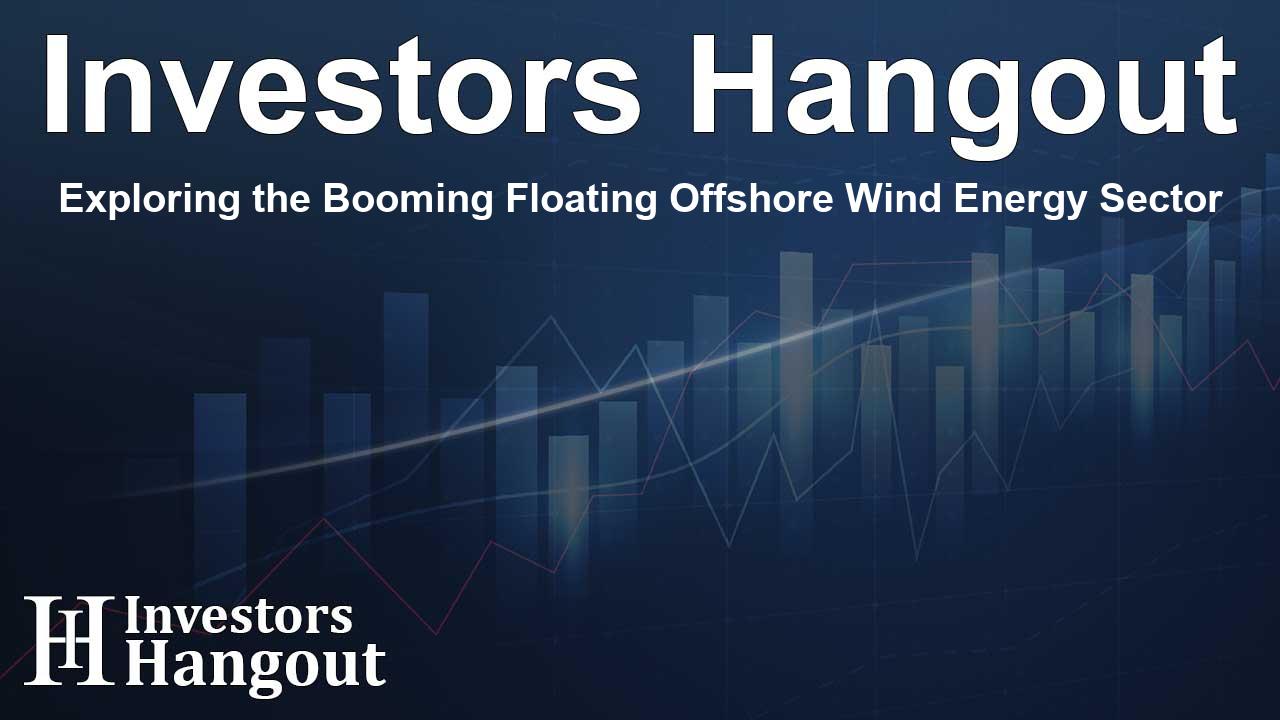Exploring the Booming Floating Offshore Wind Energy Sector

Rapid Growth in the Floating Offshore Wind Energy Market
The floating offshore wind energy market is on the cusp of tremendous growth, with projections indicating a rise from $1.7 billion towards $18 billion by the end of the decade. This remarkable transition is fueled by a compound annual growth rate (CAGR) of 60.1%, highlighting a significant shift towards renewable energy sources that play a vital role in today's climate crisis.
Key Trends Transforming the Market
The comprehensive analysis by BCC Research outlines various components shaping the floating offshore wind energy landscape. This report meticulously examines the industry's essential features, including floating platform technologies, water depth considerations, turbine ratings, and country-specific developments. It provides stakeholders with critical insights into both monetary valuations and energy capacities, painting a vivid picture of the emerging opportunities and challenges.
Market Drivers
Several compelling factors are driving this accelerated market growth:
Cost-Efficiency of Wind Energy
The cost of generating wind energy is decreasing significantly, owing largely to advancements in technology and the execution of larger-scale projects. This positive trend makes floating offshore wind projects increasingly appealing to investors and government bodies committed to achieving clean energy goals.
Research and Development Initiatives
A robust focus on R&D is pivotal in addressing technical challenges such as deep-water anchoring and turbine stability. Continuous innovation is essential for enhancing the efficiency and reliability of floating wind farms.
Green Hydrogen Linkage
The potential of floating wind farms to support green hydrogen production represents a vital integration opportunity. This synergy is especially crucial in remote locations, further promoting the decarbonization of transport and manufacturing sectors.
Integrated EPCI Services Demand
The increasing preference for bundled engineering, procurement, construction, and installation (EPCI) services simplifies project management. This trend mitigates risks while expediting the implementation of floating wind energy projects.
Innovative Technologies and Market Dynamics
As floating offshore wind energy continues to evolve, innovative technologies are reshaping industry standards. The report showcases advancements such as Tension Leg Platform (TLP) technology, which stands out for its compactness and lightweight features, facilitating easier installation while lowering costs. Moreover, hybrid systems that concurrently harness multiple energy resources—wind, solar, and wave energy—are gaining traction as they promise improved efficiency without escalating costs. Startups like ECO-TLP are at the forefront of such pioneering designs.
Emerging Startups Making a Mark
The landscape is also witnessing the emergence of fresh talent and ideas:
T-Omega Wind
Founded in 2020, T-Omega Wind focuses on reengineering the traditional wind turbine and its supporting structure to slash costs while enhancing deployment strategies. Their innovative 1/16 scale turbine launched in Massachusetts sets the stage for larger ambitions, with plans for testing full-scale turbines in the near future.
Triton Anchor
Established in 2022, Triton Anchor centers on designing anchoring solutions tailored for the floating offshore wind sector. Backed by new funding, the company aims to refine its approach and expand into the European market, indicating a growing emphasis on scalable innovations.
Challenges and Opportunities Ahead
While the floating offshore wind energy industry faces challenges like high installation costs and market differentiation, the strong backing from government policies and collaborative technological advancements offers a promising pathway forward. The essential call for cleaner, reliable energy solutions aligns perfectly with the advancements taking place within this sector, creating substantial long-term opportunities.
Frequently Asked Questions
1. What is the projected growth of the floating offshore wind energy market?
The market is expected to grow from $1.7 billion to $18 billion by 2030 with a CAGR of 60.1%.
2. What factors contribute to the market's growth?
Key drivers include lower generation costs, significant R&D initiatives, and integration with green hydrogen production.
3. How are companies innovating in the floating offshore wind sector?
Companies are leveraging new technologies like TLP and hybrid systems to reduce costs and enhance efficiency.
4. Which trending startups are shaping the future of this market?
Startups like T-Omega Wind and Triton Anchor are making considerable strides with their innovative approaches and products.
5. What challenges does the industry face?
Challenges include high setup costs and product differentiation, but government support and collaborations present pathways for solutions.
About The Author
Contact Dylan Bailey privately here. Or send an email with ATTN: Dylan Bailey as the subject to contact@investorshangout.com.
About Investors Hangout
Investors Hangout is a leading online stock forum for financial discussion and learning, offering a wide range of free tools and resources. It draws in traders of all levels, who exchange market knowledge, investigate trading tactics, and keep an eye on industry developments in real time. Featuring financial articles, stock message boards, quotes, charts, company profiles, and live news updates. Through cooperative learning and a wealth of informational resources, it helps users from novices creating their first portfolios to experts honing their techniques. Join Investors Hangout today: https://investorshangout.com/
The content of this article is based on factual, publicly available information and does not represent legal, financial, or investment advice. Investors Hangout does not offer financial advice, and the author is not a licensed financial advisor. Consult a qualified advisor before making any financial or investment decisions based on this article. This article should not be considered advice to purchase, sell, or hold any securities or other investments. If any of the material provided here is inaccurate, please contact us for corrections.
